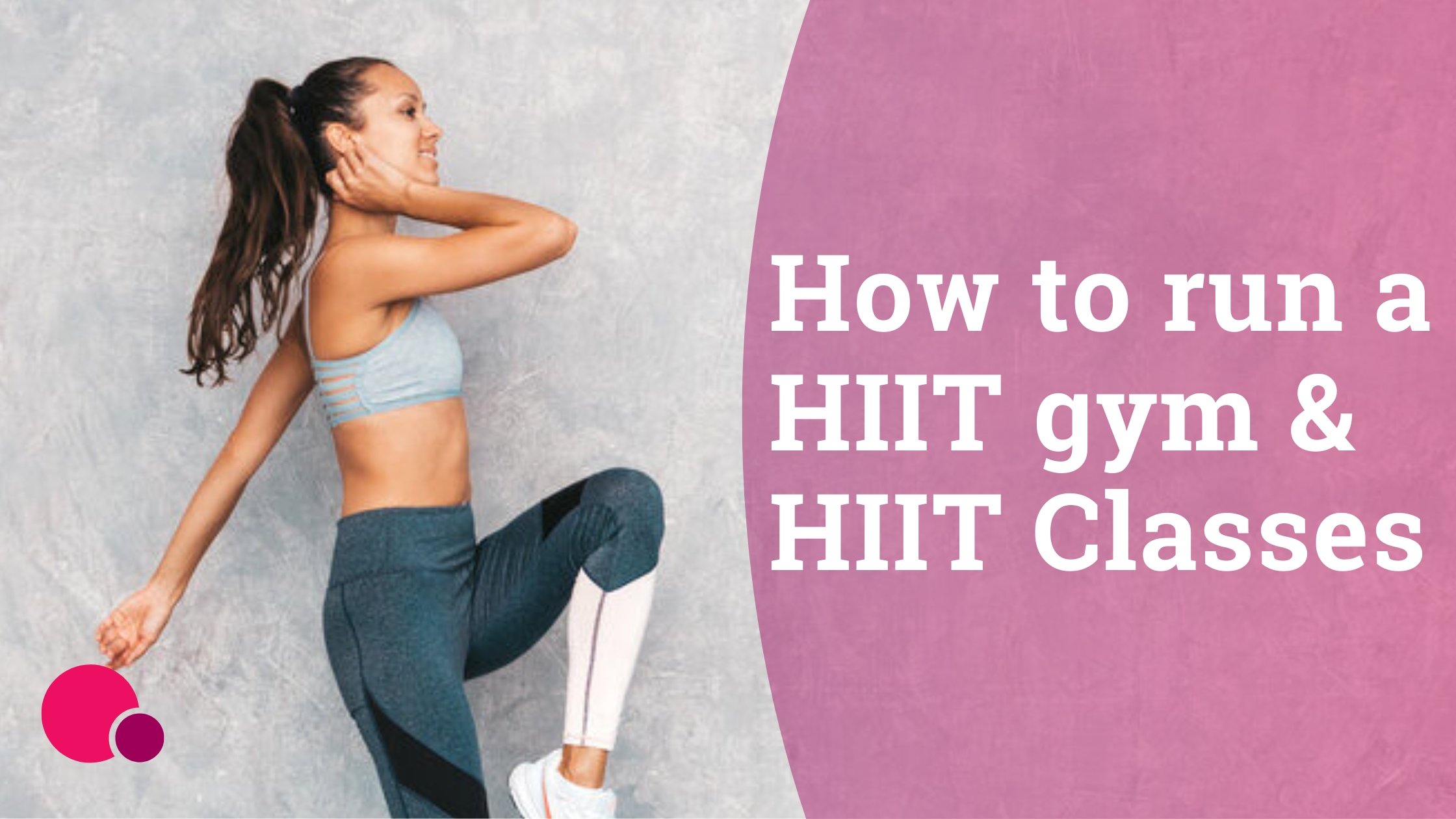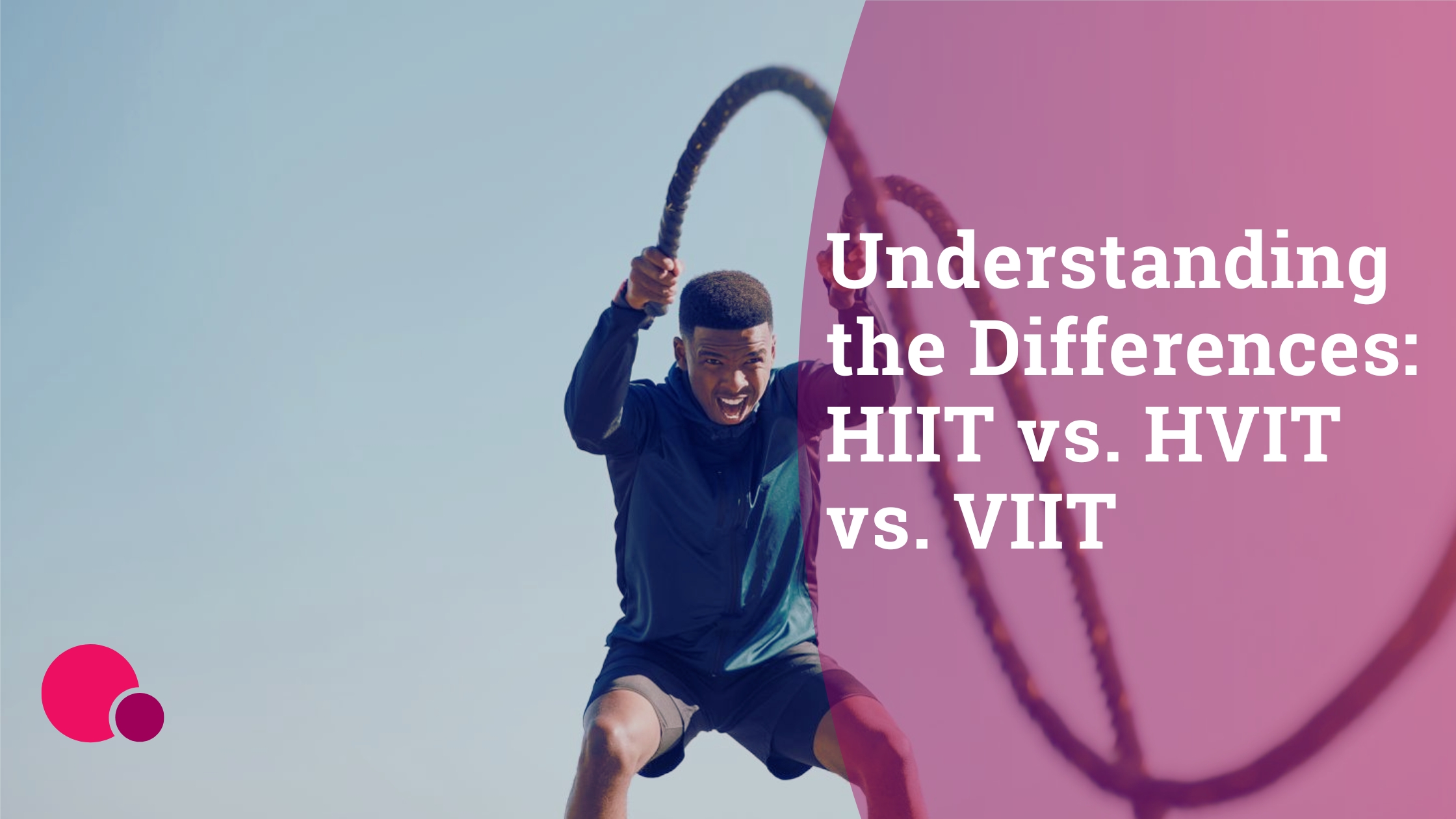Insanity and High-Intensity Interval Training (HIIT) are two popular workout styles that many people talk about, as they're known for being really intense and helping you see results quickly.
Insanity, created by fitness trainer Shaun T, is super tough. It has you working out really hard for longer periods without much rest.
HIIT is a bit different. It mixes up short bursts of strenuous exercise with little breaks in between.
This article will help you understand more about Insanity and HIIT, such as what makes them special and how they differ.
Whether you're just getting into fitness or already love working out, knowing about these two workout styles can help you determine which one might be better for you.
Key takeaways
-
Insanity and High-Intensity Interval Training (HIIT) are intense workout styles with distinct approaches to fitness.
-
Insanity, created by Shaun T, is a high-impact, total-body workout focused on cardiovascular fitness and muscle toning.
-
HIIT incorporates intervals of high-intensity exercise followed by recovery periods, making it adaptable for various fitness levels and goals.
-
Insanity suits those in good cardiovascular shape, while HIIT can be tailored to both beginners and seasoned athletes.
-
Both workouts offer mental health benefits, and a balanced diet is essential for maximizing their effectiveness.
 Origins and core principles
Origins and core principles
In exploring Insanity and High-Intensity Interval Training (HIIT), it's essential to understand where they come from and what they're built on. Both workout styles have unique origins and core principles that define them.
Development of Insanity workouts
Insanity, created by American fitness trainer Shaun Thompson, stands out for its home-based approach, utilizing bodyweight exercises without needing gym equipment.
This accessibility makes it ideal for those who prefer at-home workouts. Insanity's total-body focus targets various muscle groups, including the core, arms, chest, shoulders, legs, glutes, and back.
However, it's noted for its high-impact nature with exercises like jumping jacks and sprints and a minimal emphasis on stretching for flexibility.
Evolution and concept of HIIT
HIIT's evolution traces back to the 1924 Olympics with Finnish runner Paavo Nurmi and was further developed through the 1930s with Swedish coach Gosta Holmer's 'fartlek' training.
In the 1970s, British runner Sebastian Coe also utilized interval training under his father Peter Coe's coaching.
Modern HIIT was initially formalized in 1996 by Professor Izumi Tabata to train Olympic speed skaters.
This method, known as the Tabata protocol, comprises short, intense exercise bursts followed by brief rest periods and has since become a mainstream fitness trend.
Workout structure and intensity comparison
When comparing Insanity and HIIT, a key area to look at is their workout structure and intensity. Each method has a distinctive approach, catering to different fitness goals and preferences.
Insanity's maximum interval training approach
Insanity's workout structure is built around the concept of maximum interval training.
This method involves performing high-intensity exercises, such as cardio moves like jumping jacks and high knees, for a short duration, followed by brief rest periods.
These exercises are designed to elevate your heart rate rapidly, effectively boosting endurance and calorie burning.
Strength and agility are also key components, with exercises like push-ups and mountain climbers integrated into the routine. These movements focus on building muscle tone and agility.
Plyometric exercises, including jump squats and tuck jumps, are incorporated to develop explosive power and enhance overall body toning.
Although Insanity is highly effective for fat loss and cardiovascular fitness, it's not primarily focused on muscle mass building or flexibility enhancement.
It's most suitable if you want to lose weight and tone up rather than for significant muscle gain.
The program's high-intensity nature makes it more appropriate for individuals with a base fitness level who are looking to push their limits further.
Incorporating these varied elements, Insanity provides a comprehensive and challenging workout that targets fat loss and cardiovascular improvement, making it a popular choice for those seeking quick and effective fitness results.
HIIT's varied intensity and recovery phases
High-Intensity Interval Training (HIIT) is unique in its structure, combining phases of intense activity with recovery periods.
This alternating pattern of intensity is not just for variety; it's essential for the effectiveness of HIIT workouts.
In a typical HIIT session, you start with a low-intensity warm-up, then gradually ramp up to a high-intensity phase. This peak intensity pushes your body to its limits, significantly improving cardiovascular fitness and calorie burn. However, what sets HIIT apart is the recovery phase that follows.
This period allows your body to recuperate and prepare for the next high-intensity burst. The duration of these phases varies, making HIIT adaptable for various fitness levels and goals.
Research highlights the impact of these varying phases. A study in the International Journal of Sports Physiology and Performance found that men and women respond differently to these intervals.
Both sexes experienced an increase in power output with longer recovery times, indicating that the length of the recovery phase can be vital in maximizing the benefits of HIIT.
In practice, a HIIT routine might involve a five-minute warm-up at a leisurely pace, transitioning to a moderate pace for around five to 10 minutes. Then, you would engage in a high-intensity burst for about 30 seconds, followed by one to three minutes of moderate-paced recovery.
This cycle of high-intensity and recovery phases can be repeated two or three times within a 30-minute session, maximizing the workout's efficiency and benefits.
By tailoring the length and intensity of these phases, HIIT can be customized to fit different training goals, from improving stamina to burning fat.
This flexibility and the proven benefits of interval training make HIIT a highly effective and adaptable workout method.
Effectiveness and suitability
When comparing Insanity and HIIT workouts, it's essential to understand their distinct approaches to fitness.
Insanity is a highly structured program known for its rigorous pace and challenging routines, making it ideal for individuals seeking an intense, guided workout experience.
On the other hand, HIIT, with its short bursts of high-intensity exercise followed by rest periods, offers a flexible framework adaptable to various fitness levels.
Target audience for each program
Insanity workouts are best suited for people already in good shape, especially in terms of cardiovascular fitness.
If you're physically fit and ready for a tough challenge, Insanity might be right for you. Keep in mind that it's intense and demands proper form.
So, it's for those who are fit and understand how to exercise safely.
On the other hand, HIIT workouts work well for beginners and seasoned athletes alike. HIIT can adapt to your fitness level, whether you're just starting or are an experienced athlete.
It's versatile and can help with fat loss, muscle gain, or improving your heart health.
Comparative benefits for fat loss and muscle gain
Insanity primarily focuses on losing fat and toning your muscles. If you want to shed pounds and sculpt your body, Insanity can help.
But it's not the best choice if you aim to build a lot of muscle because it's very cardio-intensive.
In contrast, HIIT is great for both fat loss and muscle gain. HIIT is a solid option if you want to burn fat and build lean muscle. It's high-intensity and includes rest periods that support muscle growth.
Nutrition and diet integration
Your diet is crucial for getting the most out of Insanity and HIIT workouts.
Are you paying attention to what you eat alongside your workouts? A balanced diet with enough protein, complex carbs, and healthy fats is essential.
If you're doing HIIT, focus on refueling with a 3:1 ratio of carbs to protein within 30 minutes post-workout. It helps with energy and muscle recovery. Consider consulting a dietitian for personalized guidance.
Mental health and stress relief benefits
Both Insanity and HIIT workouts offer mental health benefits.
Have you thought about how your workouts affect your mental well-being? These intense workouts can be a great way to relieve stress and anxiety, leading to better mood and sleep.
Also, regular Insanity or HIIT can reduce the risk of mental health issues.
Did you know that exercise can help prevent depression, anxiety, and other mental health problems? Studies show a connection between physical activity and improved mental health.
So, including these workouts in your routine can help manage stress and boost your mental well-being.
Accessibility and equipment needs
When it comes to accessibility and equipment needs, both Insanity and HIIT have distinct advantages.
Insanity's at-home model
Insanity workouts are designed for the convenience of your home, eliminating the need for expensive equipment or a gym membership.
The workouts are primarily based on bodyweight exercises so you won't require any weights or machines.
The only additional item you might need is a mat to ensure stability during balance exercises. This accessibility makes Insanity highly suitable for individuals who prefer working out in the comfort of their homes without the need for costly equipment.
It's a total-body workout program that targets various muscle groups, including the core, arms, chest, shoulders, legs, glutes, and back. However, it's essential to note that this program doesn't emphasize extensive stretching to improve flexibility.
The program is known for being low-impact while featuring high-impact exercises like jumping jacks, jumps, and sprints.
Flexibility and minimal equipment in HIIT
HIIT workouts also offer great accessibility and flexibility. They can be effectively performed with minimal equipment, such as resistance bands, jump ropes, or even a set of stairs.
Many HIIT workouts can be done on the spot, requiring no specialized equipment or a designated workout area. This level of flexibility makes HIIT a versatile workout method that you can perform anywhere and at any time.
HIIT workouts are highly adaptable to individual fitness levels and abilities. For example, if you're new to HIIT, you can start with shorter intervals and gradually increase the duration as your fitness level improves.
However, if you have any injuries or health concerns, it's advisable to consult with a healthcare professional before starting a new workout program.
Safety and injury risks
Safety is a top concern when engaging in high-intensity workouts because there is a higher risk of injury due to the physical demands placed on the body.
Let's dive into the safety considerations for both Insanity and HIIT.
Considerations for high-intensity training
High-intensity training, Insanity or HIIT, demands careful consideration and planning to ensure safety and effectiveness, with one crucial consideration being knowing your fitness threshold.
Everyone has a unique threshold – the maximum exertion they can handle during a workout.
Knowing your threshold in HIIT training helps you understand when to ease off or take a break, as heart rates can rapidly increase.
If you have any health issues or specific medical needs, it's vital to communicate these with your instructor or trainer, as medical conditions also deserve your attention.
For instance, if you have a heart condition or any medical condition that limits your ability to engage in high-intensity exercise, informing your instructor ensures they can make appropriate modifications to keep you safe.
The clothing and footwear you choose significantly affect your safety and comfort. Proper attire should fit snugly against your body, allowing for maximum mobility without the risk of tripping on loose fabric during exercises.
Footwear should ideally be cross trainers with proper support, ensuring a full range of motion in the ankles.
Considering these factors, you can significantly enhance your safety and effectiveness in high-intensity training, whether you opt for Insanity or HIIT.
It's crucial to prioritize safety to reap the full benefits of these intense workouts.
Recommendations for safe practice in both workouts
For Insanity workouts, it's crucial to have a stable surface for balance exercises and proper form to prevent injury.
Since the workout includes a lot of jumping and squatting, closed-toe shoes and ankle braces can provide extra support.
Warming up before starting the workout is essential to prepare your body for the intense exercises.
After the workout, a proper cool-down is necessary to prevent muscle soreness and injury. Staying hydrated is also crucial throughout the entire workout process.
Having a clear space to move around safely for HIIT workouts is essential. Using a spotter, especially when performing exercises involving heavy weights or balance, can be beneficial.
Just like with Insanity, warming up before the workout and cooling down afterward is essential.
Staying hydrated throughout the entire workout is also crucial to maintain your energy levels and help with recovery.
Regardless of your workout program, listening to your body is crucial. If you experience any pain, discomfort, or dizziness during a workout, it's essential to stop immediately and not push yourself beyond your limits.
Consulting with a healthcare professional before starting any new workout program, especially if you have pre-existing medical conditions, is highly advisable.
Lastly, remember that consistency is key in any workout program. Sticking to your routine and making it a part of your daily life is essential for achieving the best results.
Long-term commitment and sustainability
Analyzing the long-term commitment and sustainability of both Insanity and HIIT is important because it helps achieve lasting results through consistent and efficient workout routines.
Insanity's long-term commitment
Insanity workouts are designed to be performed three times a week, which requires a fair amount of discipline and consistency.
The program spans 60 days, divided into three phases: the first month of high-intensity training, a recovery week, and the second month of maximum interval training.
Completing the program demands dedication, consistency, and a commitment to the diet plan that accompanies the workouts.
Notably, results from the Insanity program are typically noticeable by the end of the first month.
However, the most significant changes, such as a narrower waist and cardiovascular improvements, are usually observed in the second month.
Many individuals continue the program beyond the initial 60 days, leading to further improvements.
HIIT's long-term sustainability
Regular HIIT workouts are necessary for your body to adapt to high-intensity exercises, recover effectively, and grow stronger muscles.
Although the exact duration of a HIIT workout can vary, most experts recommend performing HIIT sessions three times a week for optimal results.
Like Insanity, maintaining a consistent HIIT workout schedule demands dedication and commitment.
However, unlike Insanity, HIIT workouts can be seamlessly integrated alongside other workout routines, making it easier to incorporate into a regular fitness regimen.
Both Insanity and HIIT demand long-term commitment and can be sustained if you're willing to adhere to the program and make necessary lifestyle adjustments to support your fitness goals.
However, it's crucial to remember that individual results may vary, and what works for one person might not work for another.
Consulting with a fitness professional before starting a new workout program is always a wise step to ensure it aligns with your fitness goals and current fitness level.
Adaptation for special populations
Insanity and HIIT workouts offer adaptability to cater to various fitness levels, ensuring that individuals of different backgrounds and experiences can benefit from these programs.
Insanity
For beginners new to intense workouts like Insanity, it can be made more manageable by modifying the intensity, slowing down the pace, or reducing the number of repetitions during exercises.
This approach allows your body to adapt to the rigorous demands of Insanity gradually.
Extended rest periods between exercises or sets can prevent burnout and reduce the risk of injury. Insanity even provides a modified workout calendar to ease beginners into the program, offering a more gentle introduction.
HIIT
HIIT workouts are inherently versatile, making them accessible to various fitness levels, and beginners can begin by adjusting the duration of high-intensity intervals.
Starting with shorter intervals, such as 20 seconds, and progressively increasing them to 30 or 40 seconds as your fitness improves is a practical approach.
Furthermore, you can customize your rest periods to suit your current fitness level. Beginners might need longer rest intervals between high-intensity bursts than more experienced individuals.
Selecting exercises that match your fitness level, starting with less complex ones, can help ensure a safe and effective workout.
Remember, the key is to listen to your body, adapt as needed, and progress at a pace that aligns with your fitness goals and capabilities. Insanity and HIIT are versatile enough to accommodate various fitness levels and objectives.
Combining Insanity and HIIT
Integrating elements from both Insanity and HIIT can provide a unique fitness routine tailored to your preferences and goals.
Here are some creative ways to blend the best of both worlds:
Hybrid workouts
You can create hybrid workouts that incorporate aspects of both Insanity and HIIT.
Begin with an Insanity-inspired warm-up to prepare your body, followed by HIIT intervals to challenge your cardiovascular fitness and endurance.
This combination can add variety to your routine and keep your workouts engaging.
Alternate between Insanity and HIIT
Consider alternating between Insanity and HIIT workouts on different days of the week.
This approach allows you to experience the benefits of both programs without overwhelming yourself with constant high-intensity training.
It also provides a balanced approach to fitness.
If you have specific fitness goals, such as fat loss, you can design your routine to target those objectives.
Use HIIT sessions for effective calorie burning and cardiovascular fitness, and incorporate Insanity exercises for muscle toning and definition.
This customization ensures that your fitness routine aligns precisely with your desired outcomes.
Create your own fitness regimen
Mix and match exercises and routines from Insanity and HIIT to create a personalized fitness regimen that keeps you motivated and excited about your workouts.
Integrating elements from both programs can add variety to your routine, enhance your results, and make your fitness journey more enjoyable and fulfilling.
FAQs
What are the key differences between Insanity and HIIT workouts?
Insanity, created by Shaun T, is a high-impact, total-body workout with longer intense periods and minimal rest. HIIT involves short bursts of strenuous exercise with breaks in between, adaptable to various fitness levels.
Who should ideally opt for Insanity workouts?
Insanity is best suited for individuals already in good cardiovascular shape and looking for an intense, challenging workout.
Can beginners try HIIT workouts?
Yes, HIIT is versatile and adaptable, making it suitable for beginners as well as seasoned athletes.
Which workout is more effective for muscle gain, Insanity or HIIT?
HIIT benefits both fat loss and muscle gain, while Insanity focuses more on fat loss and muscle toning.
Do Insanity and HIIT workouts require special equipment?
Insanity can be done at home without special equipment, using bodyweight exercises. HIIT workouts are also adaptable and can often be performed with minimal or no equipment.









